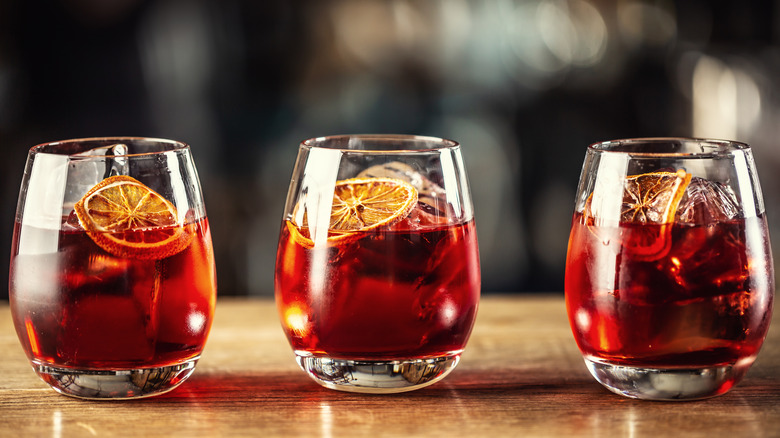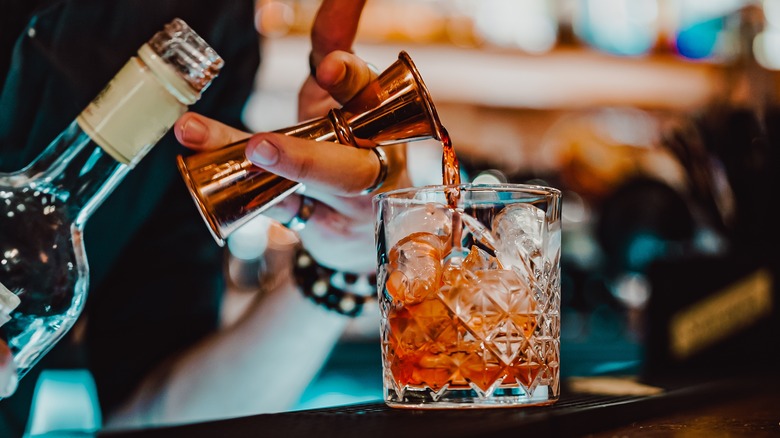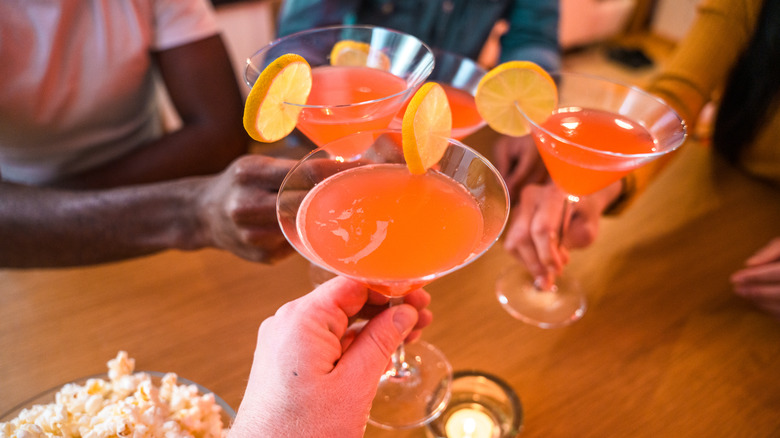How Much Water You Should Actually Add To Batch Cocktails
Cocktails can be a great way to get the party started, but they can also be time-consuming and intricate to prepare, particularly for a large group. If you prefer spending more time with your guests and less in the kitchen, preparing a large batch in advance is a smart solution. However, batching isn't as straightforward as merely multiplying all the ingredients to serve a crowd.
When crafting a single-serve cocktail, shaking or stirring it with ice serves a dual purpose: It not only cools the drink, but also dilutes it. This principle changes when making batch cocktails, as you're not individually mixing each drink with ice. Dilution, though not a term typically associated with cocktails, becomes crucial in batch preparation, and the simplest way to achieve this is by adding water.
Getting the right amount of water is crucial. Insufficient water might lead to a drink that's too strong or overly sweet, while too much water can result in a diluted taste. The ideal amount of water varies depending on the cocktail and how it's served, but there are a couple of methods to gauge it accurately for the best outcome: either measure it precisely using a single-serve sample, or apply a standard ratio. Both approaches involve some trial and tasting, which is never a bad thing.
Calculate the water based on an individual cocktail
When ice melts, it adds water to your drink. Using ice in making a single, strong cocktail, such as a Negroni, could contribute up to 40% water to the finished beverage. To accurately assess the dilution of your chosen cocktail, it's advisable to prepare a single sample for measurement.
First, measure out one serving of the cocktail without shaking or stirring it with ice. For example, consider a classic Negroni cocktail recipe, which uses one ounce each of gin, Campari, and sweet vermouth — totaling three ounces. Weigh this mixture in the glass you intend to use for serving, and note the weight. Next, stir or shake the same drink with ice, as you normally would, until it reaches your preferred taste. After straining and discarding the ice, pour the drink back into the serving glass, and weigh it again to determine the volume of liquid remaining. This step allows you to quantify the additional water added by the ice.
The difference in volume between the two iterations of the drink represents the amount of water to add to each serving. Therefore, when preparing a larger batch, you should multiply the amounts of alcohol, bitters, and other ingredients by the number of servings, as well as the corresponding amount of water.
Pre-dilute batch cocktails using a standard ratio of water
Many bartenders use a golden ratio when building cocktails, aiming to maintain the right proportions of each ingredient for balance. This principle can also guide the estimation of water amounts in batch cocktails. For a standard three-ounce, single-serve drink, the water addition typically ranges between 17 and 25%, which is about half to three-quarters of an ounce of water.
If your batch cocktail will be served over ice, you might opt for the lower end of the dilution ratio, considering that the ice will continue to dilute the drink after serving. Then, multiply both the cocktail ingredients and the calculated water ratio by the number of servings to scale up the recipe.
Whichever method you choose, it's beneficial to prepare a small batch or a single serving using your chosen technique and the additional water beforehand. This allows you to sample the cocktail after it's been assembled, chilled, and served, providing an opportunity to tweak the proportions if needed before presenting it to a larger, thirsty group.



